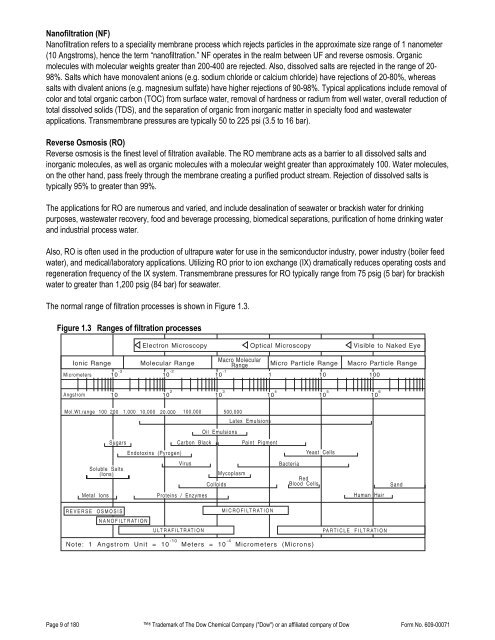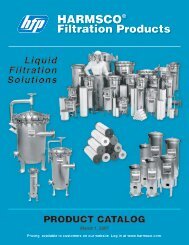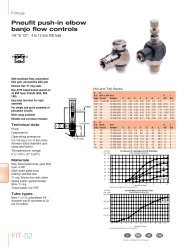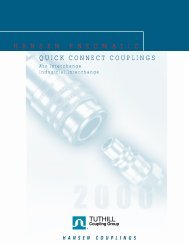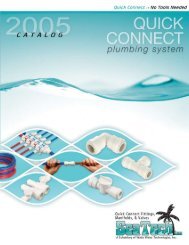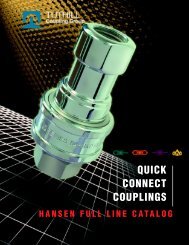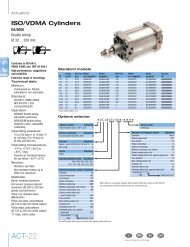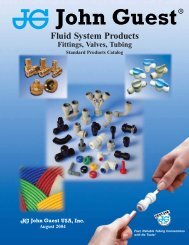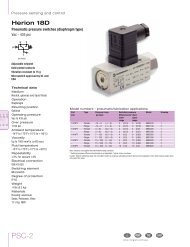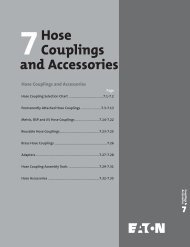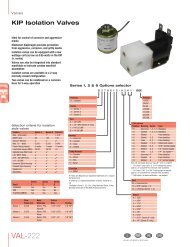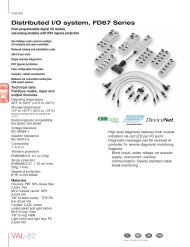FilmTec Technical Manual - Chester Paul Company
FilmTec Technical Manual - Chester Paul Company
FilmTec Technical Manual - Chester Paul Company
You also want an ePaper? Increase the reach of your titles
YUMPU automatically turns print PDFs into web optimized ePapers that Google loves.
Nanofiltration (NF)Nanofiltration refers to a speciality membrane process which rejects particles in the approximate size range of 1 nanometer(10 Angstroms), hence the term “nanofiltration.” NF operates in the realm between UF and reverse osmosis. Organicmolecules with molecular weights greater than 200-400 are rejected. Also, dissolved salts are rejected in the range of 20-98%. Salts which have monovalent anions (e.g. sodium chloride or calcium chloride) have rejections of 20-80%, whereassalts with divalent anions (e.g. magnesium sulfate) have higher rejections of 90-98%. Typical applications include removal ofcolor and total organic carbon (TOC) from surface water, removal of hardness or radium from well water, overall reduction oftotal dissolved solids (TDS), and the separation of organic from inorganic matter in specialty food and wastewaterapplications. Transmembrane pressures are typically 50 to 225 psi (3.5 to 16 bar).Reverse Osmosis (RO)Reverse osmosis is the finest level of filtration available. The RO membrane acts as a barrier to all dissolved salts andinorganic molecules, as well as organic molecules with a molecular weight greater than approximately 100. Water molecules,on the other hand, pass freely through the membrane creating a purified product stream. Rejection of dissolved salts istypically 95% to greater than 99%.The applications for RO are numerous and varied, and include desalination of seawater or brackish water for drinkingpurposes, wastewater recovery, food and beverage processing, biomedical separations, purification of home drinking waterand industrial process water.Also, RO is often used in the production of ultrapure water for use in the semiconductor industry, power industry (boiler feedwater), and medical/laboratory applications. Utilizing RO prior to ion exchange (IX) dramatically reduces operating costs andregeneration frequency of the IX system. Transmembrane pressures for RO typically range from 75 psig (5 bar) for brackishwater to greater than 1,200 psig (84 bar) for seawater.The normal range of filtration processes is shown in Figure 1.3.Figure 1.3 Ranges of filtration processesPage 9 of 180 ® Trademark of The Dow Chemical <strong>Company</strong> ("Dow") or an affiliated company of Dow Form No. 609-00071


